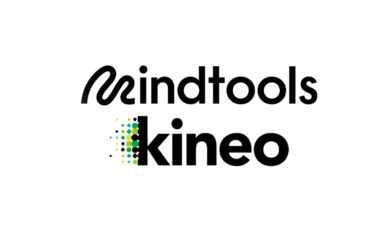“Digital” has been creeping up on us. I remember when typewriters became electronic, and then they gave way to word processors. Memos were replaced by emails, and phone calls were superseded by instant messages.
Each small change made communication a little bit easier, and now a large part of our lives has been transformed into zeros and ones as we immerse ourselves in the digital age.

Digital Revolution Danger?
There’s no question that this has added convenience to everyday activities such as banking, shopping and socializing. But what are the larger implications of the digital revolution for organizations, especially those that aren’t obviously driven by technology? Do they really need to embrace digital, or is that just a kind of corporate peer pressure?
According to Michael Gale, co-author of “The Digital Helix: Transforming Your Organization’s DNA to Thrive in the Digital Age,” it’s non-negotiable.
“What digital does, is it completely disrupts all normality around you, whether it’s Amazon buying Whole Foods, or Uber shifting the whole taxi industry, or even 3D manufacturing,” he says.
“If you accept that there’s this fundamental underlying shift in the way that business happens, ignoring digital would be as naive as saying, centuries ago, ‘These big factories with smoke stacks, nah, they’re not going to take over from agriculture.’ Or, ‘No, cars won’t take over from horses.’”
The Seven Components of the Digital Helix
Gale and co-author Chris Aarons chose the DNA helix as a metaphor for digital transformation because it reflects how interconnected and fundamental the changes need to be, for the health and development of any organization.
“It’s everything,” Gale states simply. “It’s how you hire, how you train, how you ask questions in meetings. ‘We’ve always done it this way’ can no longer be a common question. It’s got to be, ‘Look, if our employees or our customers need to do this in the real world, what do we need to do differently to make those interactions easier, more efficient, and frankly, better in quality?’”
In the book, the authors describe seven components of the Digital Helix:
- Executives as Digital Helix explorers
- Themes and streams
- Customers have experiential portfolios
- Marketing and communications as flow
- Sales are connected moments
- Everybody is responsible to each other
- In the moment, one step ahead always
When I talked to Gale for our Expert Interview podcast, we spent some time discussing the first of these: executives as Digital Helix explorers. What does this involve?
“You Need to Be Digital”
“You’ve got to be an active participant in this revolution,” he asserts. “You can’t stand on a big stage and say, ‘We’re going to go digital and everybody’s going to do this’ – you need to be digital. So as a leader in an organization of any size, with one employee, 100 employees, 1,000 employees, or 100,000 employees, you have to spend time understanding how your employees and how your customers are working in a digital world.”
Gale warns that, to succeed in this, managers may have to start thinking differently.
“The things that have got executives to where they are now are probably not the things that will sustain them in those roles in a transforming world. It’s sort of like being Christopher Columbus,” he says, taking up the explorer metaphor.
“Yes, you are the first person to discover America from the west, but that doesn’t mean you’re going to be the best colonial manager or the best governor or [even] the best explorer going in. Executives have got to realize that the world that they’re managing going forward will be ever so different to the world they’ve managed in the last five to 10 years, maybe even the last two or three.”
“Get Comfortable Getting Uncomfortable”
So managers need to “get comfortable getting uncomfortable,” he advises. Be prepared to experiment with purpose, learn from your mistakes, and “really understand your own mindset skills. What does it take for you to be a high-performing individual in a changing world?”
You also need to know how your role fits in with your company’s digital strategy. More than 80 percent of organizations have one, Gale says, but according to his research, as few as one in four companies see any return on investment from their efforts.
“If you’re sitting as a manager of a group, you need to have the capacity to say to somebody, ‘Hey, what’s our strategy? What do we have to do to be part of that? Where do we intersect in that strategy? What things do we have to stop doing, do differently, or do new for the first time?’” he says. “I think everybody, from a career perspective, should actively engage with this.”
The Move to Automation
As we wrap up our chat, I ask Gale how he sees the next five to 10 years panning out. What digital developments can we expect, and what’s the best way to prepare for them?
He shares his predictions in this audio clip, from our Expert Interview podcast:
Listen to the full 30-minute interview in the Mind Tools Club.
Are you and your team ready for digital? Join the discussion below!




